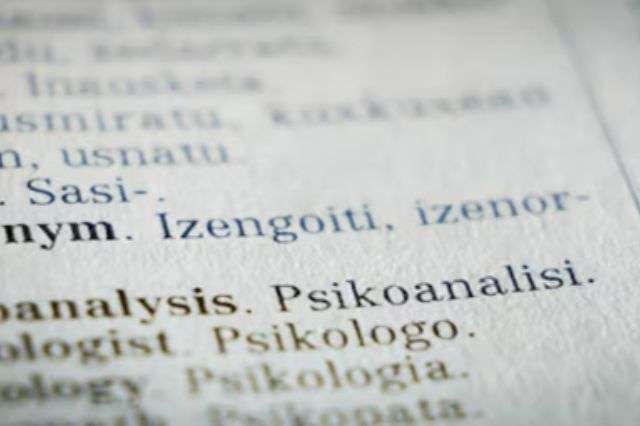The Essential Guide to Translation Services: Bridging Language Barriers for Global Success
Effective communication represents an essential human need for exchanging information, building relationships, and progressing ideas across languages. Evolving nuanced differences across dialects spoken globally challenges unaided understanding. This amplifies cultural rifts. Thankfully qualified translation services empower individuals and organizations to overcome communication barriers through expert linguistic and cultural mediation.
Why Translation Services Matter
Translation facilitates much more than just correctly exchanging words. Additional benefits arise:
- Enabling Global Reach – Expanding goods and services into new non-native language markets depends on translating branding, campaigns, websites, and apps to engage broader demographics.
- Optimizing Communication – Precise translation conveys critical specifics correctly when collaborating across language barriers present internally or with international customers and suppliers.
- Preserving Cultural Sensitivity – Leveraging regional linguistic expertise retains positive rapport avoiding inadvertent offenses from ignorance over colloquialisms, dialects, and societal norms encoded within various tongues.
- Upholding Legal and Regulatory Compliance – Authoritatively conveying complex policies, lawsuit proceedings, healthcare rights, and product safety protocols, compelled by jurisdictions to citizens in their native languages represents ethical obligations.
- Enhancing User Experiences – Thoughtful localization through translation invites non-English speakers into digital experiences or multinational customer service interactions preventing exclusion and boosting satisfaction.
Translation importance intensifies alongside accelerating global interconnectedness where mutual understanding despite linguistic hurdles proves foundational.
Types of Translation Services
Given broad applications, translation encompasses a spectrum of vertically focused competencies:
- General Translation – From websites to marketing collateral documents or product literature; skilled dual-language copywriters convey intended messaging tones and accuracy mirroring source materials.
- Technical Translation – Precisely decoding specialist vocabulary while retaining procedural specificity challenges generalists. Patent applications, medical journals, and engineering manuals commonly utilize niche technical translators.
- Legal Translation – Litigation involving foreign jurisdictions or international business disputes relies on legal experts conversant in associated legal parlance who certify documentation accuracy.
- Medical Translation – Precision communication ensures patient health. Vital translation projects include drug labels, research questionnaires, and patient education materials bridging care across languages.
- Literary Translation – Challenges arise in translating prose, poems, and sacred texts into target languages preserving underlying meanings without losing impact. Human linguists handle subjective creative nuances.
- Website and Software Localization – With digital properties core to identities, customized translation aligns UI wording, appearance, and functionality to relevant cultural styles beyond mere vocabulary swapping for amplified engagement.
The Translation Process
A multi-step process ensures translation quality:
- Analysis Stage – Linguists familiarize themselves with original content through diligent comprehension supported by references plus client discussions to solidify the desired tone and audience profiles being addressed. This grounds translation in context.
- Translation Stage – Linguists now undertake to convert source content into target languages per analysis findings. Software tools assist in reusing legacy translations, managing glossaries, and tracking progression. Skill crafts drafts.
- Editing Stage – Independent editors refine initial translated drafts to uphold clarity, consistency, and grammar correctness. Recommendations get incorporated iteratively.
- Proofreading Stage – Rigorous comparative cross-checks between translated texts against original source materials by separate reviewers verify linguistic accuracy and stylistic fidelity confirming nothing meaningfully changed or added in transition.
- Quality Assurance – As a final safeguard, professional linguists randomly validate finished translations through unbiased testing methodologies affirming conformance to globally recognized quality parameters. Scorecards guide continual optimization.
Meticulousness across analysis, translation, editing, and quality assurance phases ensures precision in conveying intended meaning resonates accurately despite spoken language barriers.
Choosing the Right Translation Service
Trusting vital communications to translators demands careful partner evaluation:
- Domain Expertise – Seek respected specialists in your subject field like law or life sciences ensuring correct technical vocabulary usage along with nuanced style particulars that generalists overlook.
- Quality Assurance – Review the rigorous checks and balances exerted throughout translation processes plus achievement standards against independent rating criteria reassuring consistently balanced outcomes instead of sporadic exceptions.
- Data Confidentiality – Question protocols governing secure source data handling, access controls, and infrastructure safeguarding clients’ sensitive information critical for upholding delicate privacy terms with outcomes.
- Technology Utilized – Blending qualified human linguists with computer-assisted translation tools balancing language pattern contextualization, data security, and cost efficiency proves ideal for sustainable quality as artificial intelligence perpetually advances.
- Cost Considerations – Weigh quote variables like word counts, specialty degrees, and turnaround urgency against budgets. However, also values long-term consistency implications since core communication makes or breaks outcomes despite savings chasing impulse.
Evaluating translators on proven competencies, communications empathy and trustworthiness ensures accurate, sensitive messaging relaying intent guarantees smooth interactions even as global connections rise.
Translation Services and Global Business
Expanding goods and services worldwide depends deeply on translation for consistency and compliance in communicating abroad as localization plays a pivotal role:
- Marketing and Advertising – Nuances differentiating regional dialects and local references missing from mass translation create communication confusion losing client traction. Without tuning messaging explicitly to suit target country subtleties around visuals, audio, copy, and mobile user habits, multi-million dollar campaigns flop yielding negligible ROI despite seeming initially foolproof.
- Sales and Customer Support – Helping global customers depends on effectively troubleshooting product issues and resolving complaints across languages. Localization programs with informed translators underpin robust support minimizing disparate experiences tarnishing brand images under 24/7 social media glare.
- Legal and Regulatory Compliance – Companies bound by regionalized mandates around permitted product ingredients, safety testing documentation, and environmental impact reporting. rely on authoritative local translation expertise ensuring adherence steers clear of fines or market access revocations through ignorance of amended ordinances. Proactive compliance translation facilitates seamless marketability confirming stability.
Translation Services in Everyday Life
Beyond commerce, translation proves indispensable in enhancing regular living globally through:
- Enabling Travel – Navigating foreign street signs, transit systems, and safety advisories while grasping menus or venue information depends on accurate messaging in apps, mobile tools, and navigation systems connecting tourists. Communication mishaps spark frustration or needless risks endangering journeys.
- Advancing Education – Academic studies synthesizing global research compilations expand knowledge frontiers by accommodating non-English source insights. Students lacking linguistic competencies otherwise miss breakthrough ideas improving lives as educational materials receive a mass translation into other tongues through digital channels.
- Facilitating Immigration – Citizens emigrating permanently into new countries rely on document translation expertise accurately converting essential proofs of age, marital status, and education credentials . in officially recognized file formats meeting validating criteria to successfully earn residency status, especially during asylum application procedures.
On individual levels, translation delivers conveniences and critical services enabling life-enhancing mobility.
The Future of Translation Services
Technology promises revolutions improving translation services through:
- Pervasive AI Integration – Machine learning trains automated engines to detect patterns speeding jobs adapting previous work onto new requests saving substantial labor costs once configured correctly. But pure software lacks creative nuances still necessitating skill.
- Deeper Localization Alignment – Regional voices directing translation ensure localized adaptations avoiding blanket one-size-fits-all globalized content incompatible resonating cultural essence into experiences boosting stickiness.
- Human and Machine Symbiosis – Combining AI efficiencies, human creativity, and specialist knowledge transfers produces high-quality translation workflows faster than relying solely on isolated clusters progressing sequentially falling short of capturing intrinsic contextual aspects.
- Enhanced Multimedia Accessibility – Powerful engines tackle translating video and audio media, not just static texts, allowing more inclusive Transferring ideas across languages need not divide humanity but rather build bridges enabling exchange of possibilities heretofore unimaginable leading to greater innovation and interdependent understanding blazing trails ahead.
Conclusion
Effective communication represents an essential human need for progressing ideas across languages. Evolving nuanced differences across global dialects challenge unaided mutual understanding, amplifying divisions. Thankfully qualified translation services prevent detrimental barriers through expert linguistic and cultural mediation conveying intended meaning accurately. By leveraging qualified human talent partnered with continuously improving software solutions, individuals and organizations can reach new horizons today restricted from view.





